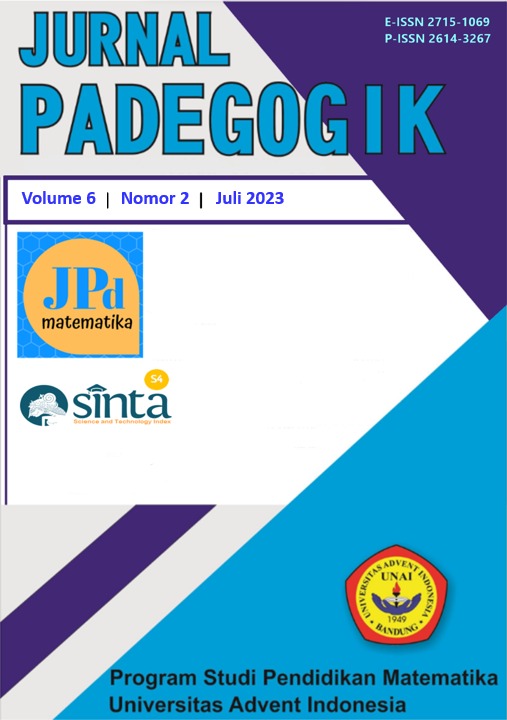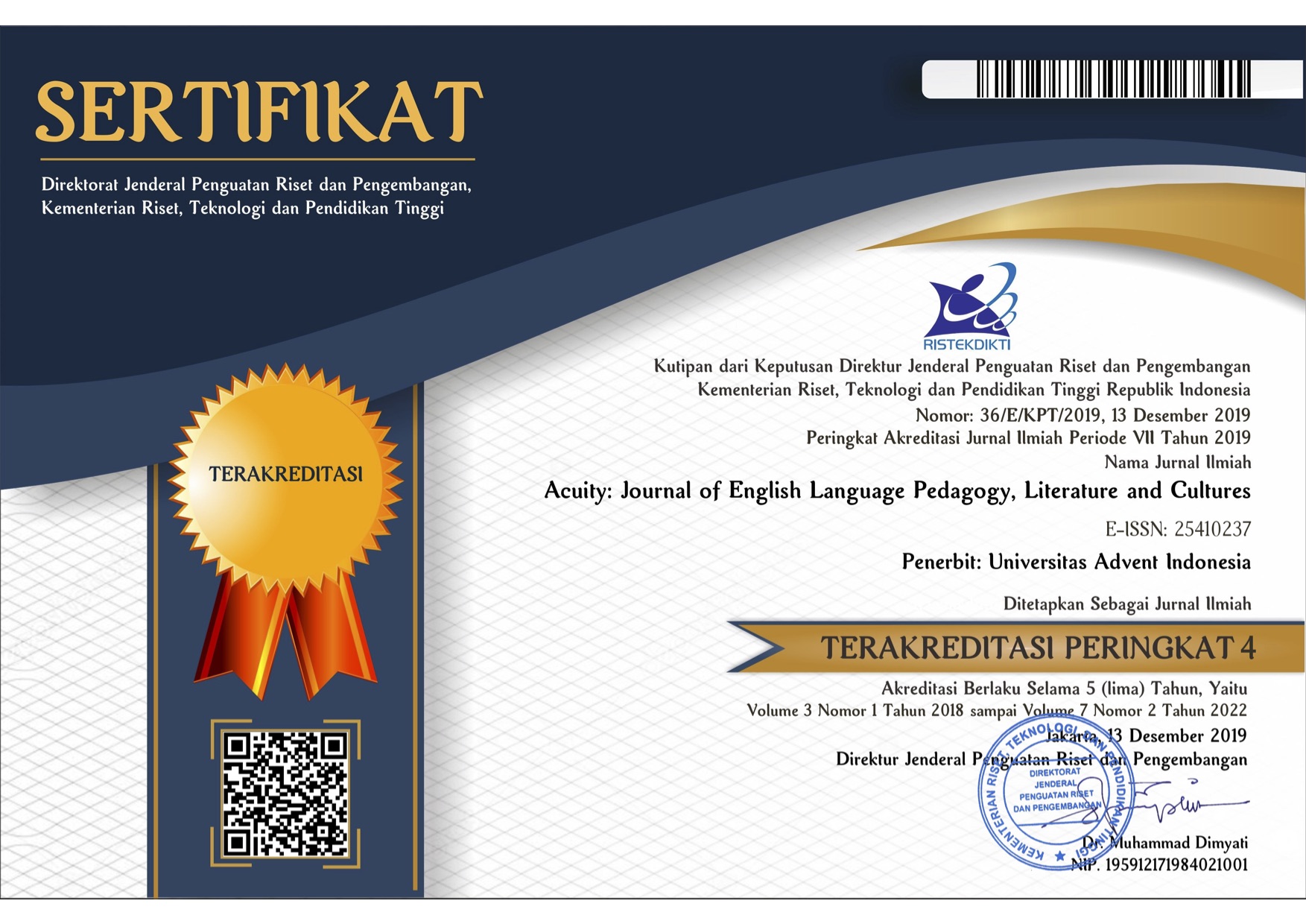THE USE OF MAWARIS-BASED CALCULATORS ON STUDENTS' MATHEMATICAL CONNECTION ABILITY IN BOARDING SCHOOLS
Keywords:
Mathematical Connection, Algebra, faraidh, Islamic Boarding SchoolAbstract
The existence of Mathematics in Islamic Boarding Schools is less attractive to students, compared to religious subjects. As a result, math scores are so low. Therefore, it is necessary to have connection skills to connect mathematics with religious subjects, namely algebra and inheritance (faraidh). The purpose of this study was to determine students' mathematical connection abilities. The method of research used is qualitative with descriptive analysis method. The research subjects were students of class IX-E MTS. At-Taufiq numbered 31 people. The data collection technique used a mathematical connection ability test followed by interviews with selected student representatives for each category. The data analysis technique used is data reduction, data presentation and conclusion. Based on the results of the mathematical connection ability test, the results obtained were 29% (9 students) in the good category, 55% (17 students) in the moderate category, and 16% (5 students) in the low category. The results of the study show that the major students have moderate category connection abilities
Downloads
References
A’la, A. (2006). Pembaruan Pesantren. Yogyakarta: PT LKIS Printing Cemerlang
Abidin, Z. (2015). Intuisi Dalam Pembelajaran Matematika. Jakarta: Lentera Ilmu Cendekia
Fitri, R., dan Ondeng, S. (2022). Pesantren Di Indonesia: Lembaga Pembentukan Karakter. Al Urwatul Wutsqa: Kajian Pendidikan Islam ISSN: 2775-4855 Volume 2, Nomor 1, Juni 2022 https://journal.unismuh.ac.id/index.php/alurwatul
Hendriyana, H. Rohaeti, E.E dan Sumarmo, U. (2017). Hard Skill dan Soft Skill Matematik Siswa. Bandung: PT. Refika Aditama.
Hodiyanto. (2017). Hubungan Kemampuan Pemecahan Masalah Matematis Dan Kemampuan Koneksi Matematis Dengan Prestasi Belajar Mahasiswa IKIP PGRI Pontianak. Jurnal Pendidikan Informatika dan Sains, Vol.6, No. 2
Ibnu Al-Manzhur, Lisaan Al ‘Arab, (Cairo: Dâr Al Mashriya li at-Ta’lîf, t.Th), juz ke-3, hal. 21-22
Inayanti, F. (2019). Model Pembelajaran Abad 21. Bandung: Mujahid Press.
Indriani, R., dan Sritresna, T. (2022). Kemampuan Koneksi Matematis ditinjau dari Self Efficacy Siswa SMP Pada Materi Pola Bilangan. Plusminus: Jurnal Pendidikan Matematika, 2(1), 121-130
Indriani, N. D., dan Noordyana, M. A. (2021). Kemampuan Koneksi Matematis Melalui Model Pembelajaran Connecting, Organizing, Reflecting, and Extending dan Means Ends Analysis. Plusminus: Jurnal Pendidikan Matematika, 1(2), 339-352
Isnaeni, S., Ansori, A., Akbar, P., dan Bernard, M. (2018). Analisis Kemampuan Koneksi Matematis Siswa SMP Pada Materi Persamaan dan Pertidaksamaan Lineas Satu Variabel. Journal On Education, 1(2), 309–316.
Madjid, N. (1997). Bilik-Bilik Pesantren Sebuah Potret Perjalanan. Jakarta: Paramadina.
NCTM. (2000). Principle and Standards for School Mathematics. Reston, VA:NCTM
Pontren, D. P. (2009). Pedoman Penyelenggaraan Pondok Pesantren Mu’adalah. Jakarta: Direktorat Pendidikan Diniyah dan Pondok Pesantren.
Ramdhani, S., Suryadi, D., dan Prabawanto, S. (2021). Hambatan Belajar Matematika di Pondok Pesantren. Jurnal Analisa 7 (1) (2021) 46-55 p-ISSN : 2549-5135 e-ISSN : 2549-5143
Somad, AA., dan Imron, E. (2010). Mengenal Teknik Berwawancara. Bandung: Sketsa Aksara Lalitya
Sugiman. (2008). Koneksi matematik dalam pembelajaran matematika Di sekolah menengah pertama. Jurusan Pendidikan Matematika,FMIPAUniversitas Negeri Yogyakarta
Sugiyono. (2017). Metode Penelitian Kuantitatif Kualitatif dan R & D. Bandung: Alfabeta
Sumarmo. (2006). Pembelajaran Keterampilan Membaca Matematika pada Siswa Sekolah Menengah. Bandung: FMIPA Universitas Pendidikan Indonesia.
Widiyawati, Septian, A., dan Inayah, S. (2020). Analisis Kemampuan Koneksi Matematis Siswa SMK pada Materi Trigonometri. Jurnal Analisa: Jurnal UIN SGD, 6 (1) (2020) 28-39
Zakaria, A. (2019). Ilmu Faraidh. Garut: Ibn Azka Press.

Downloads
Published
How to Cite
Issue
Section
License
Copyright (c) 2023 Jurnal Padegogik

This work is licensed under a Creative Commons Attribution-NonCommercial-ShareAlike 4.0 International License.
The submitting author warrants that
- The submission is original and that she/he is the author of the submission together with the named co-authors; to the extend the submission incorporates text passages, figures, data, or other material from the work of others, the submitting author has obtained any necessary permission.
- Articles in this journal are published under the Creative Commons Share-Alike Attribution Licence (CC-BY-SA What does this mean?). This is to get more legal certainty about what readers can do with published articles, and thus a wider dissemination and archiving, which in turn makes publishing with this journal more valuable for you, the authors.
- By submitting an article the author grants to this journal the non-exclusive right to publish it. The author retains the copyright and the publishing rights for his article without any restrictions.







